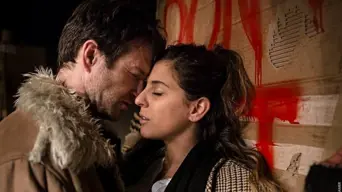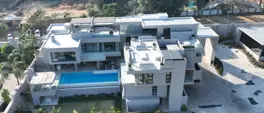‘Sarajevo’ brings a story of war, memory and reconciliation to Joburg
Eyewitness News
11 October 2025 | 12:34It’s a story of neighbours turned strangers, of friendship stretched across fault-lines of faith and of the human cost of borders drawn in blood.

Sarajevo, a play about three childhood friends, bound by love and fractured by war is currently on at Theatre on the Square in Sandton.
The play takes the audience into the year before Yugoslavia’s disintegration (the Bosnian War, from April 1992 to February 1996) - through the lens of a foreign journalist.
It pays tribute to Anné Mariè du Preez Bezdrob (1951–2016), the South African journalist and author who chronicled the Bosnian War in Sarajevo Roses and Paul Lowe (1963–2024), the award-winning photojournalist who documented its brutal realities.
The production is on at the Square from 8–18 October 2025, before journeying onward to Toronto and Edinburgh.
EWN had a Q&A with show Producer Youdeshan Padayachy.
Q: Do you think the South African audience will resonate with the story?
A: Absolutely. South African audiences understand, perhaps more than most, what it means to live through division and to search for reconciliation. Our own history has carried us close to the brink of conflict, and it’s through dialogue and courage that we avoided large-scale bloodshed. Sarajevo may be set in another part of the world, but its heartbeat, that longing to heal after fracture, is something deeply familiar to us.
Q: The camera in Sarajevo becomes a character both a witness and, in some ways, a participant in violence. How did you approach translating that visual metaphor into a live theatrical language?
A: Well, the camera is a profoundly crucial character in the play, it’s almost like a conscience on stage. In rehearsal, we explored how the lens could “see” without feeling, and what happens when witnessing turns into complicity. We worked with stillness, framing, and focus (using light, positioning, and the performers’ awareness of being watched) to translate that cinematic idea into something the audience could feel in real time. In that way, the theatre itself becomes the camera; the audience becomes witness.
Q: How does Sarajevo speak to current political realities around the world and what responsibility do artists have in times like these?
A: The play reminds us that the lines dividing people - whether drawn by race, religion, or politics - are never abstract. They cut through families, friendships, and hearts. What’s happening globally right now echoes that truth. Sarajevo distances itself from lecturing, its aim is to humanise. It asks us to see the people behind the headlines.
As artists, our responsibility is to hold space for empathy, it is to help audiences feel what’s at stake when humanity is forgotten.
Q: The production honours figures like Anné Mariè du Preez Bezdrob and Paul Lowe, who documented war. How does their legacy influence the tone and intention of your direction?
Anné Mariè du Preez Bezdrob and Paul Lowe were fearless truth-tellers. What we walk away with from the horror they faced is some kind of understanding. Their work reminds us that bearing witness can be an act of love, it can be a refusal to look away.
That spirit runs through this production. We honour their courage by approaching every scene with honesty and respect, never sensationalising pain, rather subtly illuminating the humanity within it. Their legacy guides the tone of the piece: raw, compassionate, and deeply human.
Get the whole picture 💡
Take a look at the topic timeline for all related articles.















